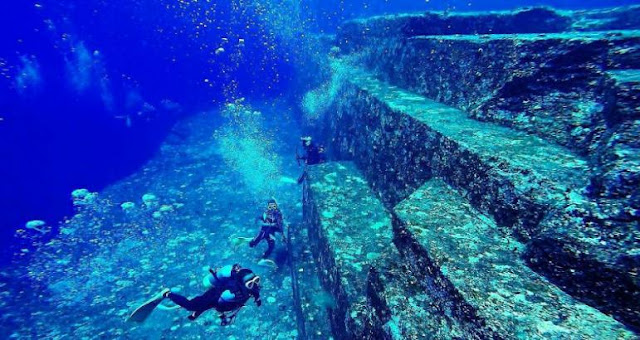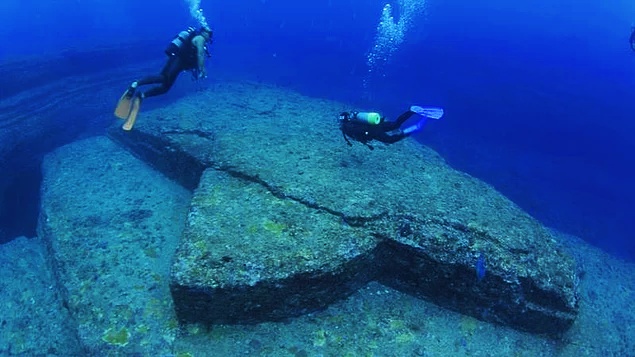Ancient megalithic ruins with laser-sharp cuts were found underwater in Japan
The “Yonaguni Monument” or also known as the “Yonaguni Submarine Ruins” is a prehistoric submerged rock formation that is formed in weird large clusters up to 5 floors high and it is highly believed to be a ‘completely man-made’ artificial structure.

The terraced formations were discovered off the coast of Yonaguni Island in Japan by the divers in 1986. It was already known as a popular diving location during the winter months because of its large population of hammerhead sharks.
Apart from its strange appearance, there were found some artifacts that prove the existence of humans at the region in the distant past.
Marine geologist Masaaki Kimura from the University of the Ryūkyūs, whose group was the first to visit the formations claims that the formations are man-made complicated monoliths that are actually the ruins of a Japanese Atlantis — an ancient city sunk by an earthquake about 2,000 years ago.
While some strongly believe, these strange rock formations are man-made from the prehistoric era. If we suppose this claim, the monument structure would belong to the preglacial civilizations.
The seabed formations resembling architectural structures consist of medium to very fine sandstones and mudstones of the Early Miocene Yaeyama Group believed to have been deposited about 20 million years ago.

The most attractive and strange feature is a rectangularly shaped formation measuring about 150 by 40 meters and about 27 meters tall and the top is about 5 meters below the sea level. This is the largest structure that looks like a complicated, monolithic, stepped pyramid.
Some of its details are said to be:
- Two closely spaced pillars which rise to within 2.4 meters of the surface
- A 5 meters wide ledge that encircles the base of the formation on three sides
- A stone column about 7 meters tall
- A straight wall 10 meters long
- An isolated boulder resting on a low platform
- A low star-shaped platform
- A triangular depression with two large holes at its edge
- An L-shaped rock
On the other hand, some of those who have studied the formation, such as geologist Robert Schoch from the Boston University, Oceanic Geoscience Professor Patrick D. Nunn from the University of the South Pacific, suggest that it is either a completely natural formation or it was a natural rock structure that was later possibly used and modified by humans in the past.
Therefore there is a great debate about whether the “Yonaguni Submarine Ruins” is completely natural, a natural site that has been modified, or a man-made artifact. However, neither the Japanese Agency for Cultural Affairs nor the government of Okinawa Prefecture recognizes the features as an important cultural artifact and neither government agency has carried out research or preservation work on the site. Actually, the Yonaguni Monument reminds us of another mysterious and more sensational undersea structure, The Baltic Sea Anomaly, which is believed to be a wreck of ancient alien-ship.
However, if you are so fascinated with the lost undersea cities or the strange ancient structures, you could visit the Yonaguni Island. No doubt the island is bound with a lot of beautiful sea scenes, quiet nature and a plenty of hidden mysteries. This 28 sq. km island is also known as Dounan in the local language, it’s located 125 km from Taiwan and 127 km from Ishigaki Island and it is the westernmost point of Japan.